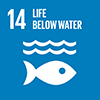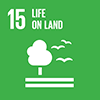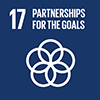Description/achievement of initiative
Clean Up the World was established in 1993 and is one of the largest community-based environmental programs in the world. We unite community groups, schools, businesses, and local governments to carry out activities that address local environmental issues. We provide expertise, support and guidance to members in 130+ countries across the world. Activities typically include clean ups to remove debris from natural environments, protecting habitats and species in waterways, wetlands, beaches, parks, forests, mountains, and bush lands. Our vision is to inspire a billion people across all continents to tread lightly, clean up and conserve the planet.
Implementation methodologies
Clean Up the World promotes action to protect the environment through an annual campaign encouraging local community groups, schools, businesses and local government to clean up, fix up and conserve the environment. Groups or individuals who show an interest in registering an activity are provided with support and guidance on how to run a safe and effective activity. Clean Up the World activities are typically 'clean ups' removing rubbish from local waterways, wetlands, beaches, parks, forests, mountains, or bush lands, however many other types of activities can be included as part of Clean Up the World such as tree planting, environmental restoration or awareness raising. The act of removing rubbish and improving the environment protects habitats for native wildlife and prevents further pollution through degradation within that environment, or travelling to other environments, including waterways and oceans where marine debris threatens many species.
When a group registers with Clean Up the World, they receive support materials via a members portal. Their activity is promoted by Clean Up the World and (if requested) volunteers can be made aware of the activity so that participation is maximized. Site coordinators utilize Clean Up the World templates to extend partnership offers to local businesses and government, often to provide resources or services to support the clean up. Clean Up the World can also directly help facilitate local partnerships where possible.
Once the activity is complete, Clean Up the World receives information from the site coordinator about the activity via an online form, including measurable outcomes such as amount and type of litter collected, area covered, type/category of environment improved, partnerships involved and number of volunteers. Clean Up the World collates this information in the context of the Sustainable Development Goals. Site coordinators and volunteers are thanked and case studies are profiled to inspire more action. The outcomes of the collective action are promoted across the world.
Arrangements for Capacity-Building and Technology Transfer
Coordination mechanisms/governance structure
Clean Up the World is managed by Clean Up Australia Ltd., an Australian charity which has been running for 30 years and is governed by the Australia Charities and Not-for-Profit Commission (ACNC).
Partner(s)
Clean Up the World (the Global Outreach program of Clean Up Australia) alongside community groups and organisations across the world




 September 2030
September 2030
 September 2030
September 2030
 September 2030
September 2030
 September 2030
September 2030
 Time-frame: 20 September 2019 - 30 September 2030
Time-frame: 20 September 2019 - 30 September 2030